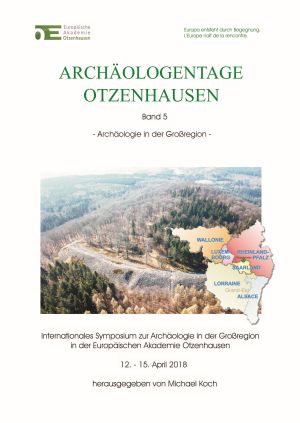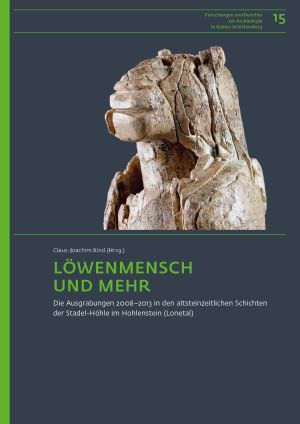Ebinger-Rist, Nicole
Archäologie in der Großregion: Beiträge des internationalen Symposiums zur Archäologie in der Großregion in der Europäischen Akademie Otzenhausen vom 12. - 15. April 2018
This volume refers to the conference in 2018, where, for current reasons, the topic of "migration" took center stage. For archaeology certainly also has a political dimension, as already suggested by the winged phrase "future needs origin". The phenomena of migration, flight and displacement, as well as the passing on of craft techniques and cultural phenomena through migratory movements are as old as mankind itself. Especially for the greater region with the states of Rhineland-Palatinate, Saarland, Luxembourg, Lorraine, Alsace and Wallonia, this is an important topic.
this is a significant topic.
Löwenmensch und mehr: Die Ausgrabungen 2008–2013 in den altsteinzeitlichen Schichten der Stadel-Höhle im Hohlenstein (Lonetal), Gemeinde Asselfingen, Alb-Donau-Kreis
The Hohlenstein in the Lone Valley (Gem. Asselfingen, Alb-Donau-Kreis) is one of the most important Palaeolithic sites in southern Germany. It became famous in particular for the “Lion Man”, found in 1935 – a unique mammoth ivory carving depicting a hybrid creature from the early Upper Palaeolithic period about 35,000 to 40,000 years ago. The Hohlenstein belongs to a group of caves in the Swabian Alb that have yielded the oldest known evidence of figurative art in the entire history of mankind, and for this reason became UNESCO World Heritage Sites in 2017.
Since the current state of preservation of the layers in the cave was largely unknown, new excavations were carried out between 2008 and 2013 by the State Office for Cultural Heritage Preservation in the Regional Council of Stuttgart. It turned out that both inside the cave and on its forecourt there were still intact layers containing finds. Surprisingly, also new fragments of the Lion Man figure came to light.








